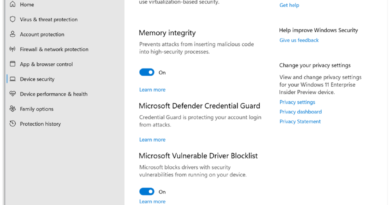Zero Trust Adoption Report: How does your organization compare?
From the wide adoption of cloud-based services to the proliferation of mobile devices. From the emergence of advanced new cyberthreats to the recent sudden shift to remote work. The last decade has been full of disruptions that have required organizations to adapt and accelerate their security transformation. And as we look forward to the next major disruption—the move to hybrid work—one thing is clear: the pace of change isn’t slowing down.
In the face of this rapid change, Zero Trust has risen as a guiding cybersecurity strategy for organizations around the globe. A Zero Trust security model assumes breach and explicitly verifies the security status of identity, endpoint, network, and other resources based on all available signals and data. It relies on contextual real-time policy enforcement to achieve least privileged access and minimize risks. Automation and machine learning are used to enable rapid detection, prevention, and remediation of attacks using behavior analytics and large datasets.
Early adopters are seeing the benefits—organizations operating with a Zero Trust mindset across their environments are more resilient, responsive, and protected than those with traditional perimeter-based security models.
Zero Trust adoption is accelerating
Today, we are publishing our Zero Trust Adoption Report 2021. In this report, we surveyed or interviewed more than 1,200 security decision-makers over a 12-month timeframe about their Zero Trust adoption journey. Highlights from our research include:
- Zero Trust is now the top security priority. 96 percent of security decision-makers state that Zero Trust is critical to their organization’s success. Now that it’s been proven, the future of security firmly includes an emphasis on Zero Trust. When asked for top reasons of Zero Trust adoption, organizations cite increased security and compliance agility, speed of threat detection and remediation, and simplicity and availability of security analytics.
- Familiarity and adoption are growing rapidly. 90 percent of the security decision-makers we surveyed are familiar with Zero Trust and 76 percent are in the process of implementation—an increase from the last year of 20 percent and 6 percent, respectively.
- Hybrid work is driving adoption. The shift to hybrid work, accelerated by COVID-19, is also driving the move towards broader adoption of Zero Trust with 81 percent of organizations having already begun the move toward a hybrid workplace. Zero Trust will be critical to help maintain security amid the IT complexity that comes with hybrid work.
- More than half believe they’re ahead of their peers. 52 percent say that they are ahead of where they planned to be in their Zero Trust adoption, and 57 percent believe they are ahead of other organizations. It’s clear that the last 18 months have had a significant impact on adoption and organizations are getting more confident and efficient in their efforts.
- Zero Trust will remain a top priority with additional budget expected. More than half of respondents expect the relative importance of their Zero Trust strategy to increase by 2023. And not surprisingly, 73 percent expect their Zero Trust budget to increase. As organizations realize the additional benefits of Zero Trust and leaders continue to pull ahead, we expect to see an increase in these numbers.
This report showcases the Zero Trust adoption progress for organizations across diverse markets and industries. We hope that this research can help you accelerate your own Zero Trust adoption strategy, uncover the collective progress and prioritizations of your peers, and gain insights into the future state of this rapidly evolving space.
Read the full Microsoft Zero Trust Adoption Report for full details.
Additional resources
For an in-depth look at our latest updates that will help accelerate your Zero Trust journey, check out Vasu Jakkal’s blog, How to secure your hybrid work world with a Zero Trust approach, from earlier this month.
For technical guidance, visit our Zero Trust Guidance Center, a repository of information that provides specific guidance on implementing Zero Trust principles across their identities, endpoints, data, applications, networks, and infrastructure.
Check out the Microsoft Zero Trust Assessment tool to help you determine where you are in your Zero Trust implementation journey and offer action items to help reach key milestones.
For more information about Microsoft Zero Trust, please visit our website, and check out our deployment guides for step-by-step technical guidance.
To learn more about Microsoft Security solutions, visit our website. Bookmark the Security blog to keep up with our expert coverage on security matters. Also, follow us at @MSFTSecurity for the latest news and updates on cybersecurity.
READ MORE HERE




